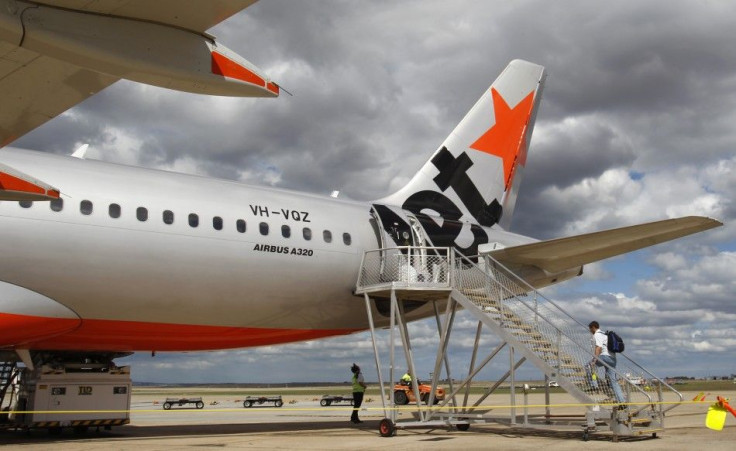Texting Pilot Almost Crashes Plane

We know all too well that texting on an aircraft is forbidden, by try telling that to the pilot of JetStar Flight JQ57 who almost crashed his plane while receiving text messages.
It's a story that is sure to spark outrage: A JetStar pilot was forced to abort his Singapore landing after he realized that he'd forgotten to put the landing gear down. What was his excuse? He was busy receiving text messages on his phone.
The Airbus A320 was just 392 feet from the ground when the texting pilot aborted his landing on May 27, 2010, according to new findings from the Australian Transport Safety Bureau. The bureau reconstructed a scene of cockpit chaos on the flight from Darwin to Singapore's Changi International Airport. Officials found that the captain, who had more than 13,000 hours of flying experience, was distracted by incoming texts while the first officer, with more than 4,000 hours of experience, was likely fatigued.
The previous night, the captain was woken twice by fire alarms in his hotel while the co-pilot was disturbed by housekeeping at 4:30 a.m., according to the report.
Investigators said the pair had lost their situational awareness, leading to poor decision-making and hampered communications.
Though the captain said he was trying to unlock his phone to turn it off, the co-pilot said the captain was preoccupied with his mobile phone and did not respond to his requests on numerous occasions.
The pair failed to realize that the wheels had not been lowered until they were at 720 feet and the cockpit alert flashed, the report stated. At 650 feet, the captain moved to the undercarriage lever instinctively but then a too low ground-warning sounded. The crew aborted the landing at 392 feet and powered up the thrust. They safely landed the aircraft a short time later.
The safety bureau reconstructed the flight using recorded flight data and a simulator. They found that the incident was the result of the effects of a number of cockpit distractions combined with fatigue to adversely affect the first officer's configuration of the aircraft for the approach and landing. Normally, it could be expected that the captain, as the pilot not flying, would have been monitoring the situation and have intervened to correct the situation.
JetStar, a low-cost offshoot of Qantas that operates across Australia, New Zealand, and Asia, claims lessons learned from the incident have been incorporated in new pilot training. The airline said it will make the flight a case study in its training on the potential for cockpit distraction.
In the case of JQ57, pilot distraction meant all the landing checklist items weren't completed before the aircraft passed an altitude of 500 feet, at which point a go-around was required under our operating procedures, said Capt. Mark Rindfleish, JetStar's chief pilot, in a statement.
New changes include completing landing checklists before 1000 feet and a reminder to pilots to ensure that mobile devices are off before takeoff.
The safety bureau did not fine JetStar or the two pilots for the incident.
© Copyright IBTimes 2024. All rights reserved.












